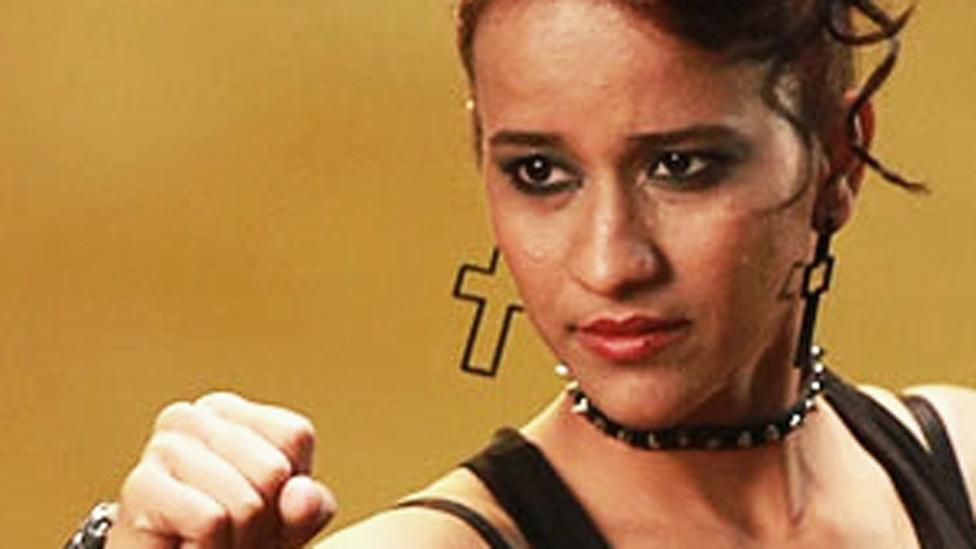How safe is it to be a stunt performer?
- Published
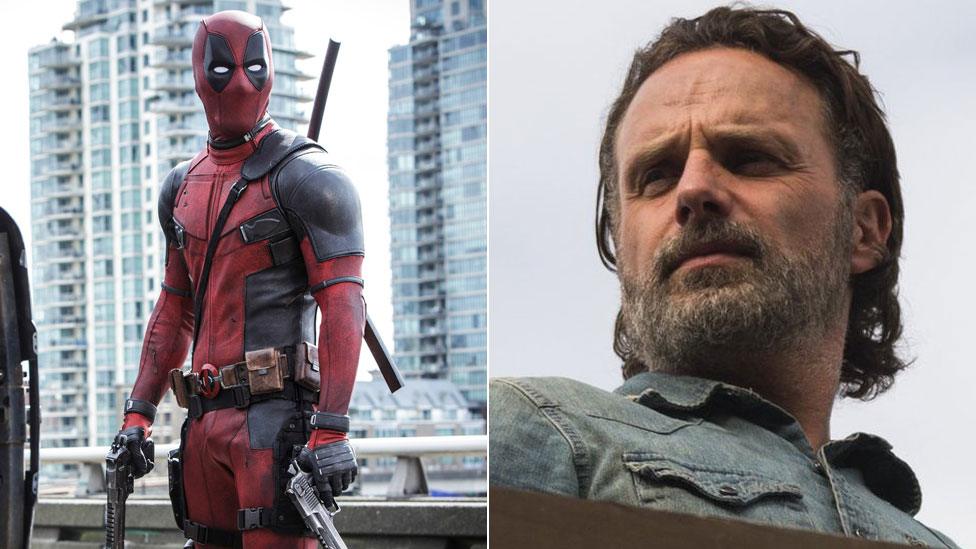
Stunt performers have died while filming Deadpool 2 and The Walking Dead
Two stunt performers have died during filming in North America in the past few weeks, but how dangerous a profession were they in and what regulations are there to protect people?
A stuntwoman was killed in a motorcycle accident earlier this week while filming Deadpool 2 in the Canadian city of Vancouver.
Eyewitnesses said Joi SJ Harris had lost control of the bike, jumped a kerb and crashed into a building.
Her death follows that of stuntman John Bernecker, who died after suffering a fall on the set of The Walking Dead.
The accidents have prompted questions about the profession and what safeguards are in place to protect stunt performers in the film industry.
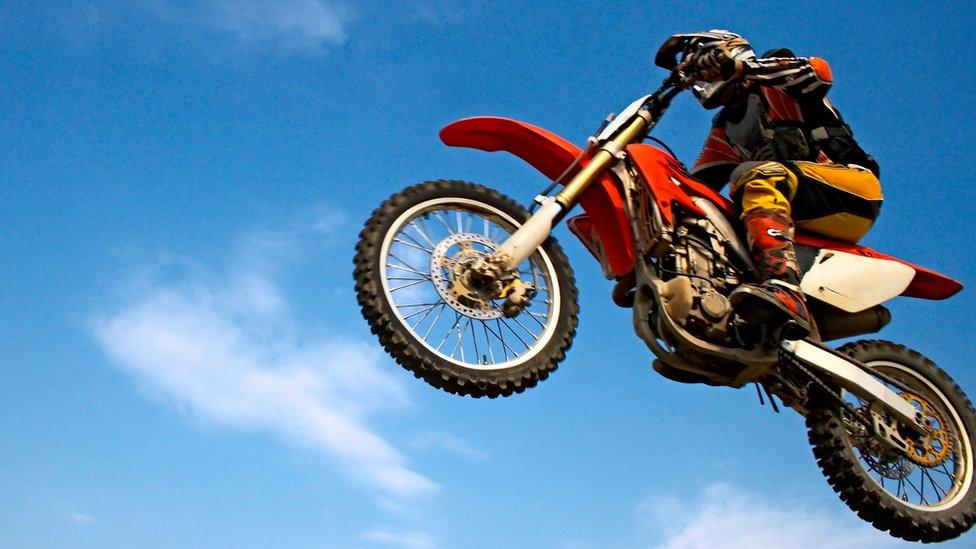
In the UK, stunt co-ordinators and performers can apply to join the Joint Industry Stunt Committee (JISC) register.
There are three levels of membership - probationary, intermediate and full. Each has various required competencies and it can take up to seven years to reach the top.
Stunt co-ordinator and performer Tony Christian told the BBC: "People on the register have chosen to do this as a career, as opposed to being someone who just wants to have a go at stunts or a daredevil."
To move up the levels, members have to prove they have taken on a variety of work in the industry so they can demonstrate the skills to perform in different situations.
Before being listed in the register, however, applicants have to provide evidence of their stunt performance skills as well as their knowledge and application of health and safety rules.
They need qualifications to the appropriate standard in six or more categories, with at least one in the Fighting group.

Stunt categories
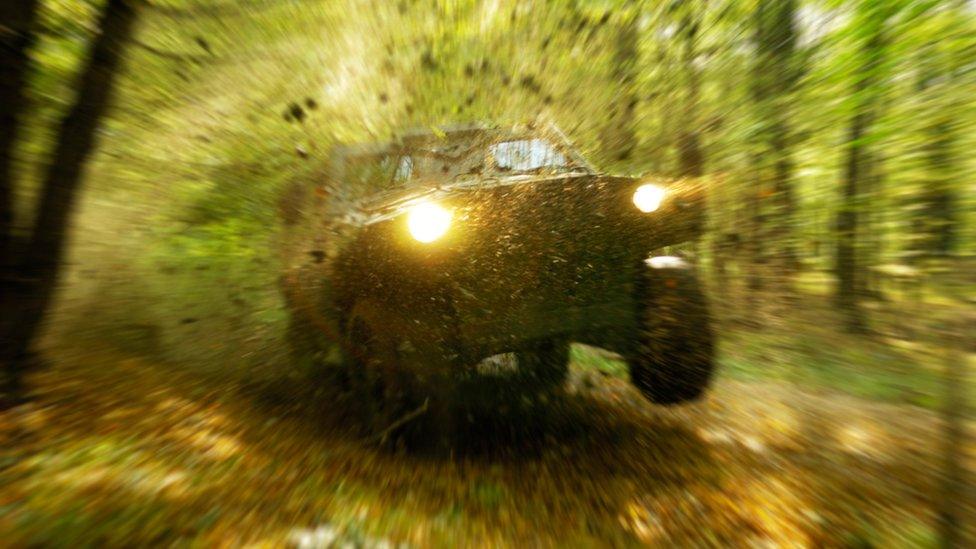
Group A: Fighting (categories: martial arts and boxing)
Group B: Falling (categories: trampolining and high diving)
Group C: Riding and Driving (categories: horse riding, cars and motorcycles)
Group D: Agility and Strength (categories: gymnastics and rock climbing)
Group E: Water (categories: swimming and sub aqua)

The register is the only authorised directory of stunt artists based in the UK and it is advisable for people to be members to be employed, although not a legal requirement.
Christian said: "Being on the register promotes good sense and although you don't have to be part of the register to be a performer, we always try and persuade productions to make the stunt register their first call when crewing stunts for a feature or television programme."
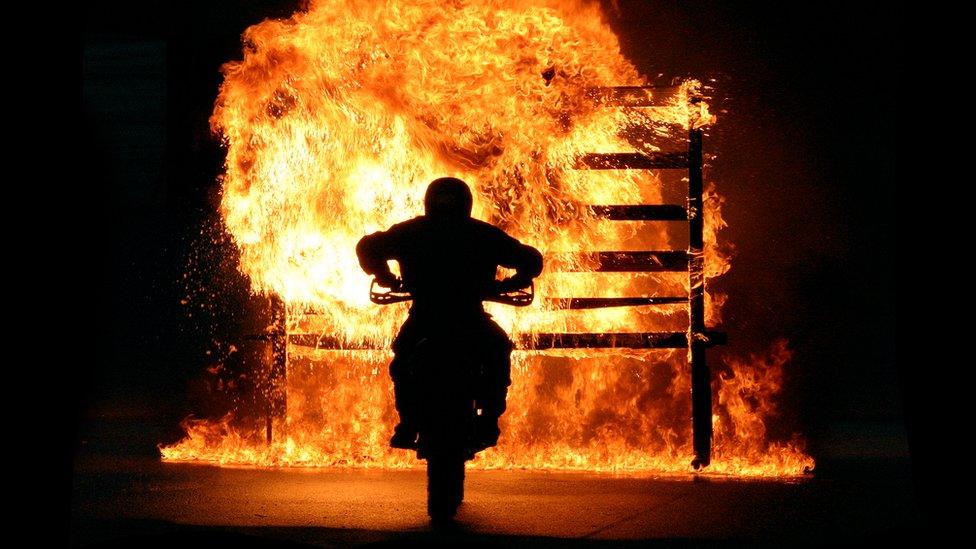
A spokesman for the British Action Academy (BAA) added: "While the vast majority of successful stunt performers have trained and joined the stunt register, some performers have had successful careers specialising in certain stunt areas, such as stunt driving, without training for the stunt register. However, this is a much tougher route and can be very hard to gain contacts."
The recent accidents have brought the issue of safety to the fore once again. It is clearly impossible to guarantee 100% safety in any stunt work but many safeguards are in place.
The BAA spokesman told the BBC: "Professional stunts on film and TV productions are invariably well planned and rehearsed and the crew's top priority in any stunt is safety - not only for the performer but for any spectators, cast and crew around the stunt.
"It's the stunt co-ordinator's job to ensure the stunt is risk assessed and with the help of his team and the crew, to ensure it is rehearsed as often as possible for the performer to feel safe and confident in their action."

By their very nature, stunts are dangerous but what safety measures are taken during scenes like car chases and fights?
"On a basic level, precautions can include using experienced stunt performers, specially adapted stunt cars, full padding and helmets for the drivers and road closures to protect the public," the BAA spokesman continued.
"When it comes to stunts involving knives and swords, these weapons should be props designed to look as real as possible so they will not be sharp.
Driving cages
"Sharp weapons should only be used for close-ups. If needed, stunt performers can wear padding to protect themselves."
He added: "In most cases, the main elements of high-octane stunts are real. You will have real cars with stunt drivers chasing down real streets.
"Obviously, there are clever camera tricks to make it look like a car is travelling at 100 mph, where in reality it can be travelling much slower. Driving cages can be put on the top of cars, controlling the car from the roof by a stunt driver, to make it look like the actor in the car is driving.
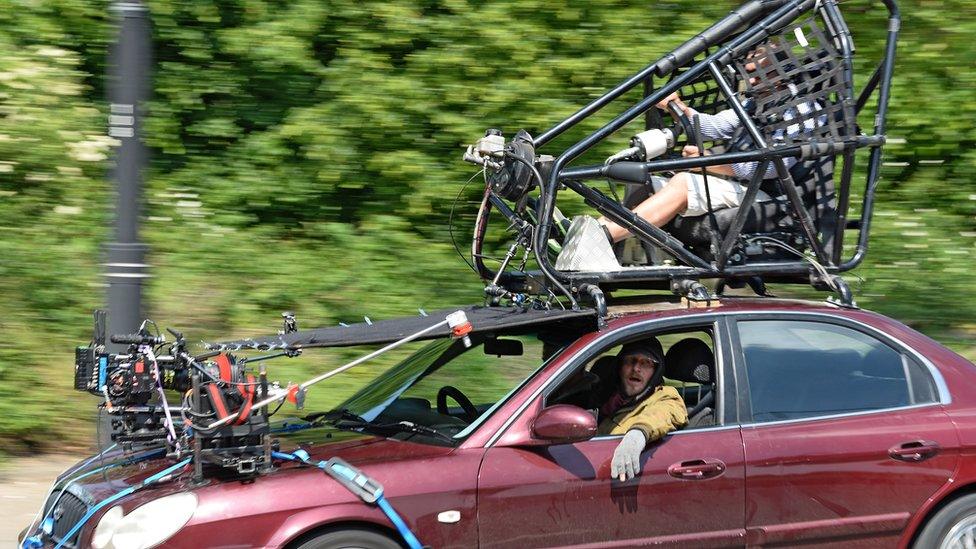
Driving cages - such as this one, used for BBC drama The Interceptor - allow the person on top to drive the car
"There are many effects with CGI that will enhance the scene but in most cases, these stunts are real."
Real they may be - but it is not always possible to successfully shoot a dangerous scene first time.
Christian says: "The risk increases the more you do it and you try to limit the number of takes that are done, but sometimes factors like the cameraman missing the shot, the lighting going amiss or the director not being happy with how the shot turned out can affect things.
"Occasionally you can have a one-take wonder, but usually at the most it would be done two or three times."
While most stunts are performed by the professionals, some actors prefer to do their own.
However, they are in the minority as the BAA spokesman explains: "There are many reasons why most actors don't perform their own stunts. One reason would be that action can be shot on a second unit and an actor may be needed at the same time on the main unit, so they can't be in two places at once!
"Another reason would be the safety of the actor. If a lead actor is injured in any way, this can become a costly issue for production and they will not want to put anyone's life in danger. Actors are much more physical these days and some do like to participate in certain stunts, if it's deemed safe to do so."

Follow us on Facebook, external, on Twitter @BBCNewsEnts, external, or on Instagram at bbcnewsents, external. If you have a story suggestion email entertainment.news@bbc.co.uk, external.
- Published15 August 2017

- Published15 July 2017
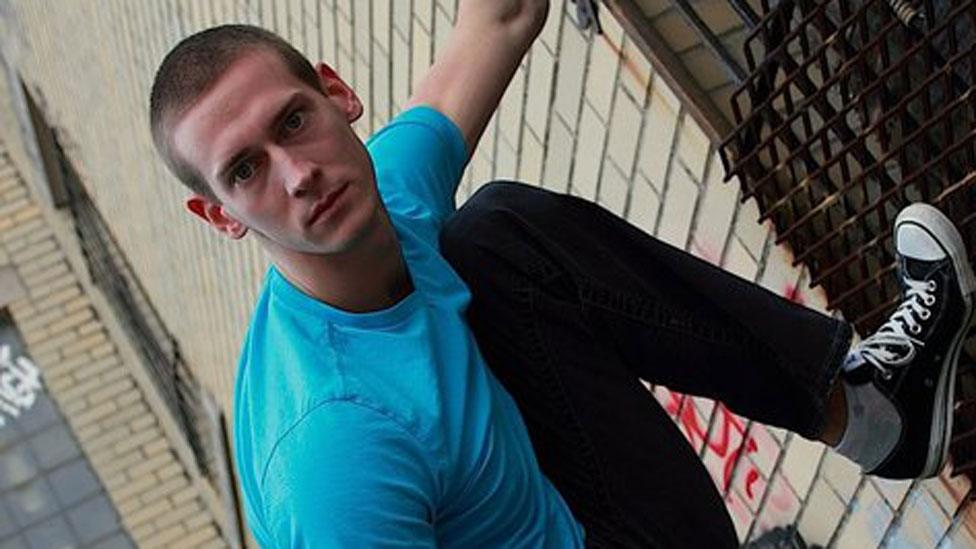
- Published24 July 2017

- Published18 August 2016
